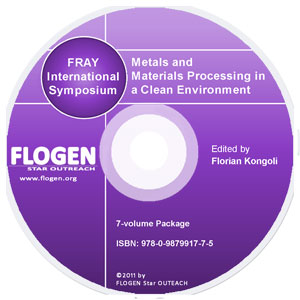
CD shopping page |
2011-Sustainable Industrial Processing Summit
|
| Editors: | Florian K |
| Publisher: | Flogen Star OUTREACH |
| Publication Year: | 2012 |
| Pages: | 646 pages |
| ISBN: | 978-0-9879917-6-8 |
| ISSN: | 2291-1227 (Metals and Materials Processing in a Clean Environment Series) |
A novel approach to fabricate Jute-Clay-IPG-PP composite for radiation protection
Kamol Dey1; Kamol Dey1; Ruhul Khan2; SELECT * FROM contact WHERE email_address REGEXP('kamolacct@gmail.com|kamolacct@gmail.com|dr.ruhul_khan@yahoo.com')*********************1UNIVERSITY OF DHAKA, Dhaka, Bangladesh; 2BANGLADESH ATOMIC ENERGY COMMISSION, Dhaka, Bangladesh;
Type of Paper: Regular
Id Paper: 545
Topic: 9
Abstract:
Nowadays, many kinds of materials were employed as nuclear radiation shielding material, while, the requirements of radiation shielding become more and more strictly. Ionizing radiation is widely used in laboratory, industry and medicine, but poses a significant health hazards. Heavy metal based shielding materials have been commonly used for radiation protection. An attempt was made to prepare a cost effective jute-clay-iron phosphate glass-PP based composite as a potential candidate for radiation protection. Different weight percentages of clay (5%, 10%, 15%, 20%, 25% and 30% clay in clay-PP blend) was blended with polypropylene (PP) bead using extruder to prepare various composition of clay-PP blend and various mechanical properties such as, tensile strength (TS), elongation at break (Eb), tensile modulus (TM), bending strength (BS) and bending modulus (BM) were studied. Optimum clay percentage was selected as 10% clay in PP. Then PP-clay-jute composite (30 wt% jute) was prepared using this blend (10% clay in PP) by compression molding and subjected to various mechanical tests. TS, BS, TM and BM were found to be 45, 56, 620 and 1024 MPa, respectively. Iron phosphate glass (IPG) (compositions: Na2O-CaO-MgO-Fe2O3-P2O5) powder retains a substantial relative shielding efficiency while having a much lower conductivity than bulk phosphate glass. IPG powder (10 wt%) was incorporated onto jute fabrics by hand lay-up technique for shielding purposes and then jute-clay-IPG-PP composites were fabricated. Mechanical properties of both types of composites (jute-clay-PP and jute-clay-IPG-PP) were compared. It was found that the values of TS, BS, TM, BM, and IS of jute-clay-IPG-PP composite improved significantly than that of control (jute-clay-PP) composite. Jute-clay-IPG-PP composite was found 67% increase in TS and 108% increase in BS over that of the control (jute-clay-PP) composite. Water ageing and degradation tests of both types of composites were carried out. The prepared jute-clay-IPG-PP composite will highlight a new dimension to shielding material for its intrinsic properties and economic consideration.